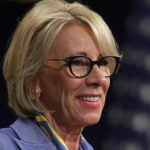
New Delhi: The Maharashtra government Monday announced that it would adopt the Delhi school model to increase the quality of education in the state.
“Today, the Delhi school education model is considered to be the best in the country,” Maharashtra Deputy Chief Minister Ajit Pawar said while announcing the decision. “The transformation in the education system under the Delhi model needs a relook and should be replicated to raise the standard of education in Maharashtra,” he added.
Pawar said all municipal corporation-run schools in Mumbai, Pune, Nagpur, Pimpri-Chinchawad and Navi Mumbai will follow the Delhi model of education. “The Delhi model will ensure both effective financial management and also better educational standards,” Pawar added.
Reports said the Brihanmumbai Municipal Corporation has already been “asked to study the Delhi model and evolve a framework”.
On Tuesday, the Aam Aadmi Party (AAP), which runs the government in Delhi, welcomed the decision.
“This is good news and we are all pleasantly surprised,” AAP’s Maharashtra leader Mukund Kirdat said. “That our political adversaries accept that the Delhi education model is the best in the country, is testament to the quality of work and honesty of our resolve.”
ThePrint takes a look at Delhi’s much talked about school education model.
Contents
AAP’s education model
One of the AAP’s key promises in Delhi was to provide an equal chance at quality education to children from all sections of society. The AAP government went about the task by improving infrastructure and the curriculum of schools.
In its Delhi manifesto, AAP had promised 500 new schools but according to its own media adviser Akshay Marathe, only 30 have been developed owing to land shortages.
To overcome the shortfall, the AAP government built 8,000 new classrooms in the existing 30 schools.
AAP’s education budget has also increased almost every year. It now constitutes at least 26 per cent of Delhi’s overall budget, hitting the figure of Rs 13,997 crore in the 2018-19 fiscal.
In 2016, the government allocated over Rs 25 crore for the construction of new classrooms and for the repair of existing school buildings.
Some principals and teachers were also sent on a 12-day training session to Cambridge University. Moreover, subjects such as retail, travel and tourism, information and technology, beauty and wellness, financial market, management, and security were introduced as courses in the schools.
The reforms
At the heart of Delhi’s education model is the school management committees (SMCs). The SMCs are mandated under the Right to Education Act 2009. This committee comprises parents and teachers affiliated to a particular school.
The members of the SMCs live in the vicinity of the school so they would feel a ‘sense of ownership’ towards this process. SMCs are responsible for monitoring and assisting in matters of the school.
The AAP government also took several other steps to strengthen the Delhi model of education. It made education free up to Class 12. It also increased scholarships for students who scored above 80 per cent.
The Arvind Kejriwal-led government also introduced a happiness curriculum and an entrepreneurship mindset curriculum. CCTV cameras were also installed in schools and parents were provided a live feed. The management quota was also scrapped during admissions.
‘Chunauti’ to check dropout rate
The AAP government has also made efforts to keep students in classrooms. To check the dropout rate, the government introduced the ‘Chunauti’ scheme in 2016. Under the initiative, students are divided into groups on the basis of whether they can read or write Hindi and English, and solve mathematics.
Depending on their learning abilities, they are offered ‘special classes’ in the government schools. This scheme has been reformed and has been inspired by Nobel Prize winner Abhijit Banerjee’s model.
As part of the scheme, students are divided into three groups in Class 6 — Pratibha (for the best students), Nishtha (for the average ones) and Neo Nishtha (for those who barely pass). Even though they sit in the same classroom, the teaching methods vary.
Atishi, former adviser to Delhi Education Minister Manish Sisodia, had earlier told ThePrint, “Some students were so weak that they could not read or write, hence we had to divide them into different groups and teach them at a level that they could understand.”
In June 2018, ThePrint reported that Delhi government’s schools had “outperformed” private schools. The pass percentage in government schools was 90.68 per cent, whereas the pass percentage for private schools was 88.35 per cent.
Shortcomings of the Delhi model
According to a report by Praja Foundation, an NGO in the education sector, the number of students attending Delhi government schools fell by 8 per cent between 2013-14 and 2017-18.
AAP had also initially promised to open 20 degree colleges. This promise wasn’t delivered because affiliated colleges can only be opened under Delhi University, which is a central university.
The years 2015 and 2016 also recorded some mishaps in government schools.
In June 2015, a fan fell on students in a Pushp Vihar government school. A government school in Delhi’s Mubarakpur Dabas witnessed plaster and building material falling from the ceiling in August 2016.
[“source=theprint”]



